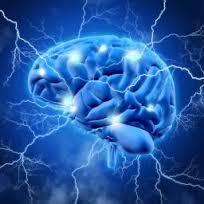
There is an increase in epilepsy according to the latest prevalence study in America. The Centers for Disease Control and Prevention found that an estimated 3 million people and nearly half a million children have epilepsy across the US. That equates to approximately 1.2% of the US population.
"Epilepsy poses substantial individual and societal burdens that require heightened public health action," wrote Matthew M. Zack MD and Rosemarie Kobau, MPH, at the Centers for Disease Control and Prevention, the Aug. 11 Morbidity and Mortality Weekly Report. "Persons with epilepsy often have multiple co-occurring conditions (e.g., stroke, heart disease, depression, or developmental delay) that complicate their epilepsy management, impair life goals, and contribute to early mortality."
Few recent and reliable national estimates on the prevalence of epilepsy exist, and most states have no estimates on epilepsy prevalence, making it more difficult for public health and advocacy groups to address the issue. For this study, the CDC researchers analyzed data from the 2015 National Health Interview Survey for adults, the 2011-2012 National Survey of Children's Health and the 2015 Current Population Survey data.
Research
Researchers classified adults with epilepsy if they had experience at least once seizure in the past year and/or they had a doctor's diagnosis of the condition and were taking medication to manage it. Children similarly were included in the estimates if their parents reported that their child received a physician's diagnosis of epilepsy or a seizure disorder.
The combined data sets revealed that 1.2% of people in the US have active epilepsy. The prevalence is even higher, at 3.4%, among adults ages 20-64 who receive Medicaid. These estimates took into account differences in age or income that could have influenced prevalence of the disorder.
"We probably are better educating families and the lay population about what would be the symptoms of epilepsy, such as loss of consciousness or convulsion," said James Riviello, MD, a pediatric neurologist at Texas Children's Hospital in Houston
"Children with seizures are more likely to live in poverty, and their parents more frequently report food insecurity," wrote the CDC authors. "Direct yearly health care costs per person with epilepsy ranged from $10,192 to $47,862 (2013 U.S. dollars) and were higher for persons with uncontrolled seizures."
Article source: Forbes.com
